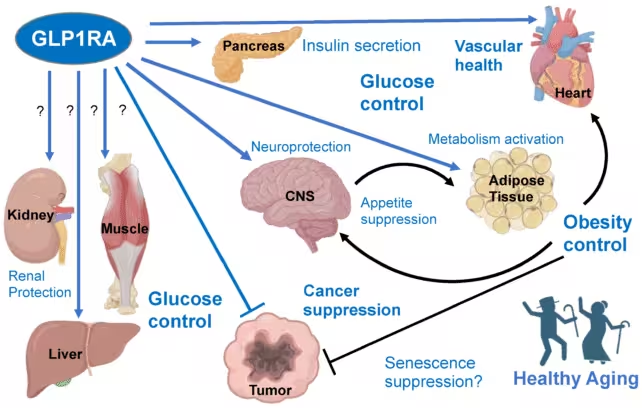4 Minutes
The Expanding Potential of GLP-1 Agonists Beyond Diabetes
Medications such as Ozempic, Wegovy, and Saxenda have gained worldwide recognition for their significant contributions to weight loss and the management of type 2 diabetes. However, recent scientific investigations indicate that the benefits of GLP-1 (glucagon-like peptide-1) agonists may extend far beyond controlling blood sugar. These injections are now being explored as a potential treatment for neurological conditions, including chronic migraines—a development that could reshape migraine management for millions worldwide.
Recent Clinical Trial Offers Encouraging Results
A newly published pilot study conducted at the University of Naples, Italy, has shed light on the migraine-relieving potential of the GLP-1 agonist liraglutide. The trial monitored 31 individuals with obesity and a history of frequent or chronic migraines, each of whom received daily liraglutide injections over a 12-week period. The outcomes were remarkable: the average number of monthly migraine days fell from 19.8 to 10.7, marking a reduction of nearly 50%.
Independent of Weight Loss and Confounding Variables
One notable aspect of the study is that factors such as weight loss, age, gender, and concurrent use of other medications did not significantly influence outcomes. According to the research team, this suggests that liraglutide’s effect on migraine frequency is independent of its well-known metabolic benefits. “Our findings show that liraglutide may be effective in treating high-frequency or chronic migraines in patients with obesity, regardless of its impact on weight,” the authors report.
Migraines: A Widespread and Challenging Condition
Migraines affect around 14-15% of the global population. Despite advances in headache medicine, many patients continue to suffer from inadequate symptom relief and a lack of effective, preventative treatments. “A substantial number of patients still face an unmet need, especially when preventive drugs prove ineffective,” observes neurologist Simone Braca, lead author of the study. Significantly, the participants enrolled in this trial had migraines that were unresponsive to prior standard treatments—underscoring liraglutide’s potential where other therapies fall short.
How Do GLP-1 Agonists Work?
GLP-1 agonists work by mimicking the function of glucagon-like peptide-1, a hormone released after eating that helps regulate appetite and blood sugar levels. These drugs target GLP-1 receptors, which are distributed throughout multiple tissues and organs in the human body, not just the pancreas. Recent studies have shown that this broad receptor presence could have unexpected implications for other health conditions—including neurological disorders.

Reducing Intracranial Pressure: A Potential Mechanism
One hypothesis gaining interest is that GLP-1 agonists may reduce intracranial (inside the skull) pressure, a factor implicated in triggering migraines. Animal studies have demonstrated that these medications can decrease fluid in the central nervous system, thereby lowering intracranial pressure and suppressing migraine symptoms. However, the recent trial did not directly investigate this mechanism or measure intracranial pressure in its human participants, leaving questions about the precise biology at work.
The Road Ahead: Toward Broader Migraine Therapies
The findings from this pilot study present an encouraging step forward but are limited by the small cohort and lack of a control group. Researchers emphasize the need for larger, randomized controlled trials to confirm liraglutide’s efficacy and refine understanding of its mechanism in migraine prevention. If future studies validate these results, GLP-1 agonists—including longer-acting options like semaglutide—could soon offer new hope to chronic migraine patients.
Conclusion
The latest research highlights a promising new avenue for migraine treatment: repurposing GLP-1 agonist medications traditionally used for metabolic diseases. By potentially reducing migraine frequency independently of weight loss, drugs like liraglutide may address critical gaps in migraine therapy. As scientific interest grows and larger studies are launched, GLP-1 agonists could redefine the standard of care for millions living with the disabling effects of migraines, bringing new relief where there was little before.
Source: doi



Comments